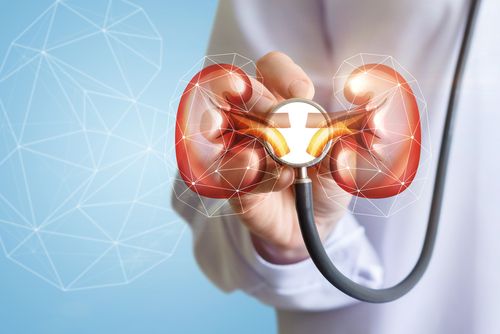Preventive Soliris Appears to Increase Kidney Transplant Success in aHUS

Preventive or early treatment with Soliris (eculizumab) appears to increase the chances of a successful kidney transplant among people with atypical hemolytic uremic syndrome (aHUS), a new study reports.
While limited by its small sample size, the study found that none of the patients treated with prophylactic (preventive) Soliris experienced an unsuccessful transplant, while about 20% of those who did not receive such treatment had their transplant fail.
The study, “Prophylactic or Early Use of Eculizumab and Graft Survival in Kidney Transplant Recipients With Atypical Hemolytic Uremic Syndrome in the United States: Research Letter,” was published in the Canadian Journal of Kidney Health and Disease.
aHUS is caused by the abnormal activity of part of the immune system known as the complement cascade. This causes small blood vessels throughout the body to become inflamed, which can damage organs, particularly the kidneys.
Because the kidneys often are damaged in aHUS, some patients may require a kidney transplant as part of their treatment.
Marketed by Alexion, Soliris is an approved treatment for aHUS that works by preventing the overactivation of the complement system. While it is known that disease recurrence is associated with a poorer likelihood of a successful transplant, it is unclear whether treatment with Soliris around the time of the procedure might influence its outcome.
To assess the effect of preventive or early treatment with Soliris around the time of kidney transplant, a team led by researchers from the Walter Reed National Military Medical Center, in Maryland, analyzed patient records from U.S. databases.
Data were analyzed from 335 aHUS patients who received a kidney transplant. Among them, 23 received Soliris prophylactically — meaning that treatment was initiated before, or within 30 days of the transplant — while the remaining 312 did not.
The patients overall were mostly female, white, and age 30 or younger. There were no significant demographic differences between those who did or did not receive Soliris prophylactically.
For the 23 patients who received preventive treatment with Soliris, the median start time of therapy was one week before the transplant. The median duration of treatment was 798 days, or just over two years. The treatment cost per patient was a median of $706,518.
The findings showed that none of the individuals treated with preventive Soliris experienced graft loss, or an unsuccessful transplant. Meanwhile, one of every five patients who did not receive prophylactic Soliris experienced graft loss, making the transplant unsuccessful.
Statistical analyses also indicated that preventive treatment with Soliris significantly decreased the likelihood of graft loss, by about 20%. However, the risk of death was not significantly different in participants who did or did not receive preventive Soliris.
“Although there was no significant difference in the risk of death, prophylactic/early use of [Soliris] was significantly associated with improved graft survival among aHUS [patients who received a kidney transplant],” the researchers concluded, noting that this study, “adds to the mounting compelling evidence of benefit with prophylactic/early use eculizumab in the [near-to-transplant] setting.”
The team cautioned that this study is limited by its small sample size. Additionally, most of the databases used contained administrative data, rather than detailed clinical information, the researchers noted as another limitation.
Because of Soliris’ high price — more than $700,000 per patient in this study — the researchers noted that “careful consideration of this therapy is warranted.”
Further studies are needed to determine the optimal treatment regimen for preventive Soliris in aHUS patients undergoing a kidney transplant, the team said. Such research, they emphasized, would help to maximize clinical benefits while avoiding unnecessary costs.






